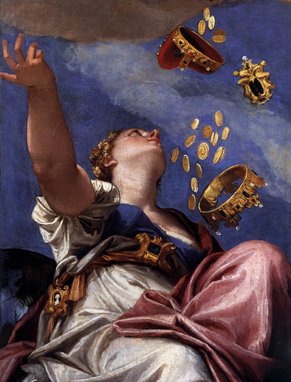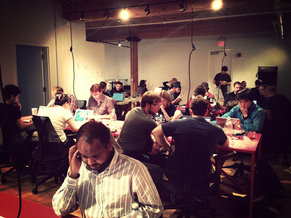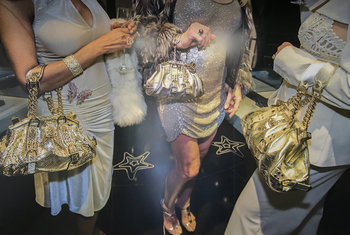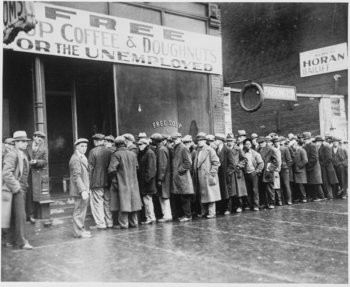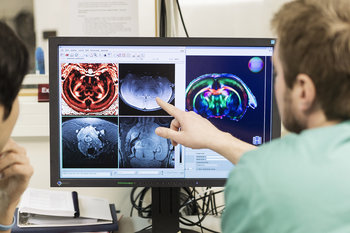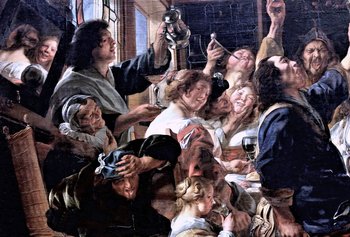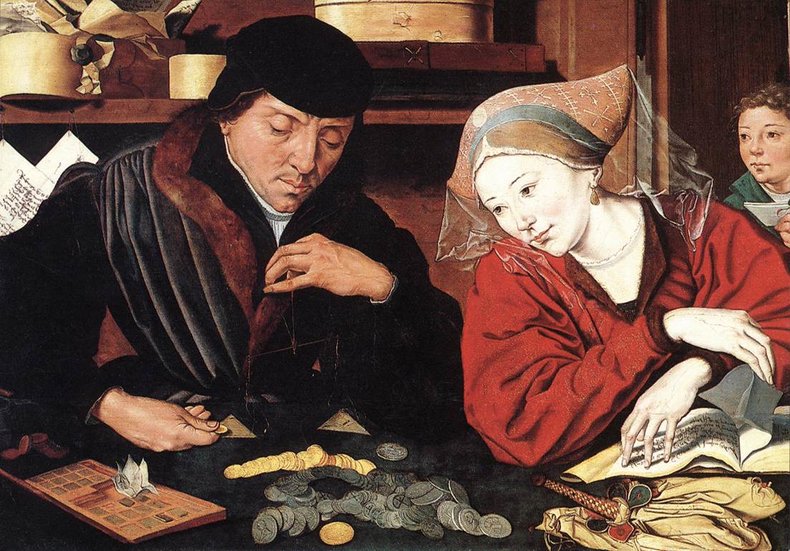
Commodity Money
Generally speaking, it is a myth that historical societies relied on barter for payment. The earliest human civilizations used commodities as money such as cocoa beans, beads, shells, sugar, alcohol, tobacco, arrowheads, rice, barley and furs. This was in place by the Neolithic Revolution, beginning around 10,000 BC, when humans began to farm and create permanent settlements.Commodity Credit
Neolithic societies not only had commodity money but they also had credit. For example, there is evidence that farmers used credit against future crop yields to purchase supplies. In this case, the crop was used as a unit of account and form of payment that can be viewed as money.Coins
Coins allow for far more efficient exchange as a small amount of a precious metal such as gold or silver has the value of a large amount of a commodity such as rice. As such, this greatly facilitates large purchases, payment of wages and the use of money as a store of value. The Chinese historically used cowry shells as a form of commodity and produced bronzed versions of these shells around 900 BC that were arguably the first coins. Lydia, an Iron Age kingdom in present day Turkey, produced electrum coins as early as 700 BC. Electrum is a naturally occurring alloy of gold and silver. Interestingly, Lydia began to debase the currency over time by adding other metals such as copper.Representative Money
Representative money is money that has no physical value of its own that can be exchanged for a commodity of value such as gold. China produced leather promissory notes in 118 BC that may have been the first representative money. Rome produced similar notes by 57 AD.Legal Tender
Legal tender is money that has to be accepted as payment according to the laws of a nation. This dates back to a 1833 British Law that was strengthened in 1844 with a law that also fully backed the currency with gold. The Bank of England issued the first permanent bank notes in 1694 and introduced many innovations such as notes in standardized amounts.Fiat Money
Fiat money is money that has no physical value that also isn't backed by a commodity by the issuer. Arguably, this originated in present-day Sichuan China in the 10th century whereby the government issued large amounts of paper currency known as Jiaozi that could theoretically be exchanged for gold, silver or silk. The government enforced a monopoly on the printing of money and failed to acquire adequate commodities to back it. Although the Jiaozi was ostensibly convertible, this was prohibited in practice such that it was a defacto fiat currency. This eventually resulted in inflation and abandonment of the currency despite efforts by the government to stabilize it. This involved meaningful innovations such as allowing taxes to be paid with the currency.Digital Money
The first digital money occurred when banks began to digitalize their records in the 1960s such that large amounts of bank deposits became digital. Initially, these bank deposits could be exchanged for fiat money at a branch and cheques could be written against them. The first online banking service was introduced by Nottingham Building Society in the UK in 1982. This made payments fully electronic for the first time.Anonymous Digital Money
The first anonymous digital money was introduced by an American company called DigiCash in 1990. This firm declared bankruptcy in 1998 having achieved only limited adoption. The first widely used anonymous digital money was Suica launched by West Japan Railway Company in 2001. This is a rechargeable contactless smart card that can hold small amounts of cash and is widely accepted by point of sale payment systems in Japan. Suica is only anonymous in the sense that it can be purchased and charged with cash without any link to a person.Decentralized Digital Money
Historically, most digital money is centrally managed by a single firm that may integrate with a large number of partners for payments. In this case, all transactions are recorded in a database controlled by a single organization. In 2009, a currency known as Bitcoin based on cryptography and an elegant system of decentralization known as blockchain was operationalized. Its origins are essentially unknown or disputed. Bitcoin is attributed to the pseudonym Satoshi Nakamoto.Notes
Modern fiat currencies are stabilized with their status as legal tender such that taxes can be paid with them. As such, they are essentially backed by the economy of the nation that issues them. It is unclear why governments have allowed bitcoin to operate as other payment systems are required to follow laws related to audit trail, know your customer and tax reporting. From the perspective of governments, it has a number of disadvantages as compared to a fiat currency. For example, it is beyond the control of monetary policy and consumes significant amounts of electricity. As such, it is currently unclear how governments will regulate it. Some argue it isn't actual money because it isn't backed by anything valuable, isn't used as a unit of account and its price has been too unstable to be a useful form of payment.| Overview: Origin Of Money | ||
Type | ||
Definition | A store of value and unit of account that is accepted as payment. | |
Related Concepts | ||


